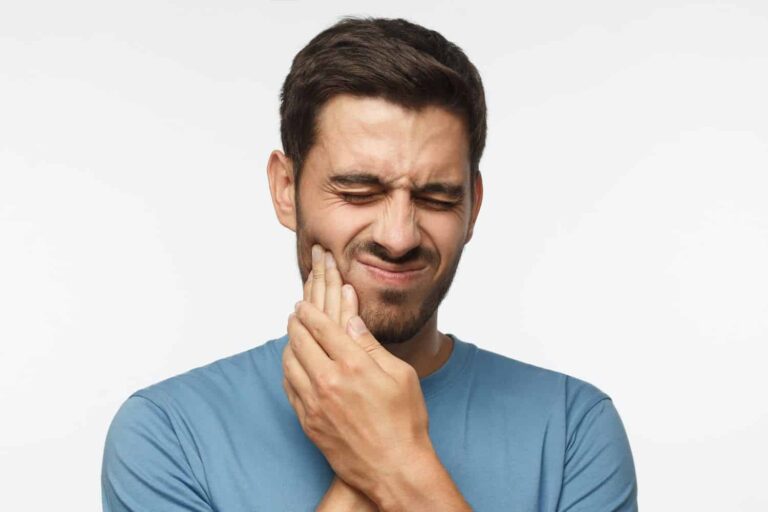TMJ and Bruxism Unveiled: Effective Solutions for Ear and Jaw Pain Relief
TMJ Conservative Treatment for TMD: A Comprehensive Guide
Conservative therapy refers to non-invasive treatments that avoid making irreversible changes to the teeth, jaw, joint, or tissue of the patient. If you’re dealing with TMJ disorder (also known as temporomandibular joint disorder or TMD), Dr. Adatrow offers several conservative treatment options to alleviate your symptoms.
What Treatment Would I Be Recommended for TMJ Disorder?
Dr. Adatrow emphasizes a holistic and non-invasive approach to health problems. At Advanced Dental Implant and TMJ Center, patients are often provided with stabilization splints. A custom splint is made by taking an impression of your teeth or using a digital scan. You may be instructed to wear the splint 24/7 at the beginning of your treatment or only while sleeping. The success of splint therapy depends on how well you comply with Dr. Adatrow’s instructions. To ensure your dental splint fits correctly and provides maximum relief, our dental team may need to adjust it several times as your jaw adjusts.
Why Was I Recommended Psychological Treatment for My TMJ Disorder?
TMJ Conservative therapy is commonly employed to manage symptoms that can be aggravated by stress. Recent studies indicate that biopsychosocial therapy can profoundly impact TMD symptoms by addressing stress. This therapy often includes Cognitive Behavioral Therapy (CBT) and biofeedback, helping patients control or modify their body’s response to stress or pain.
What Medications Are Prescribed to Reduce TMJ Dysfunction Symptoms?
For temporary relief of TMJ pain, over-the-counter painkillers like ibuprofen, naproxen, and piroxicam can be used. If the pain is more severe, Dr. Adatrow might prescribe stronger medications, such as opioids (e.g., morphine, codeine), benzodiazepines (e.g., Valium, Xanax), muscle relaxants, and anticonvulsants. Anti-depression medications may also be prescribed to reduce stress and anxiety, which can exacerbate TMJ symptoms.
Are There Any Supplements to Support TMJ Health?
Yes, Dr. Adatrow can discuss supplement options to boost your TMJ health. He might recommend supplements such as glucosamine sulfate, calcium, magnesium, chondroitin sulfate, vitamin D3, vitamin B complex, turmeric, and vitamin C.
What Kind of Diet Can I Eat to Protect My TMJ?
When experiencing severe TMJ dysfunction, chewing may be painful. Here are some dietary tips:
- Avoid prolonged chewing of gum.
- Avoid hard or chewy foods like apples, raw carrots, or celery. Instead, slice or cut them into bite-sized pieces before eating.
- Prefer softer foods such as scrambled eggs, oatmeal, yogurt, quiche, tofu, soup, smoothies, pasta, fish, mashed potatoes, milkshakes, bananas, applesauce, gelatin, or ice cream.
- Choose ground or finely diced meat to reduce the need for extensive chewing.
Why Are Occlusal Adjustments Made for TMJ Treatment?
Occlusal adjustments involve modifying the enamel of the teeth to allow a more harmonious relationship between the upper and lower teeth. These adjustments can be made through orthodontic devices, restorations, crowns, or surgery. However, Dr. Adatrow typically avoids these irreversible methods for TMJ treatment, preferring to focus on TMJ Conservative therapy unless the severity of the condition warrants more drastic measures.

What Is Low-Level Laser Therapy for TMD?
Low-level laser therapy (LLLT) is an infrared light treatment applied directly to the TMJ area. LLLT offers biostimulation and analgesic effects by direct radiation without causing thermal reactions. This therapy improves blood flow by increasing oxygen, glucose, and nutrients to the affected muscles, stimulates the body’s healing process, speeds up recovery time, and enhances the health of the TMJ.
What Are Trigger Point Injections in TMJ?
Trigger points are muscle knots or highly tensed muscle areas. Trigger point injections involve injecting anesthetics like lidocaine or mepivacaine into these trigger points, numbing the area for several hours and relieving pain for days or even months.
How Is Ultrasound Used in TMJ Therapy?
In some cases, ultrasound may be employed, which provides deep heat to the muscles and joints. This therapy helps to relax muscles, improve circulation for recovery, and reduce pain, often aiding in quicker healing of the affected TMJ area.
Why Was I Recommended Conservative Therapy for TMD?
According to the National Institute of Dental and Craniofacial Research, conservative and reversible treatment is recommended for TMJ because these methods do not harm oral tissues, and reversible treatments do not cause permanent changes. Dr. Adatrow will suggest the most appropriate conservative treatment for your specific condition.
Why Reducing Your Stress and Anxiety Is Essential
Reducing stress and anxiety is crucial for calming your mind and releasing muscle tension, which can alleviate TMJ pain. Addressing stress and anxiety may also help reduce bruxism (teeth grinding and jaw clenching), which can contribute to TMJ disorder. Additionally, it may help you curb harmful oral habits like biting nails, cheeks, lips, or chewing on pens, which can exacerbate TMJ symptoms.
How Do Trigger Point Injections Work for TMD?
Trigger point injections provide pain relief by disrupting muscle knots and modifying pain transmission. These injections cause minimal discomfort and can be administered in our dental office.
What is a TMJ Splint?
A TMJ splint is a removable dental appliance that covers the surfaces of some or all of the upper and lower teeth. Often called occlusal splints, these devices help correct the biting relationship between the teeth. Splints are typically made from acrylic resin, and hard splints are commonly preferred due to their durability and ease of maintenance.
Why Was I Recommended Physiotherapy for My Temporomandibular Disorder?
Dr. Adatrow believes in addressing the root cause of TMJ disorder rather than just the symptoms. As part of a holistic approach, he may prescribe physiotherapy and other TMJ Conservative therapies to support your overall treatment plan.


